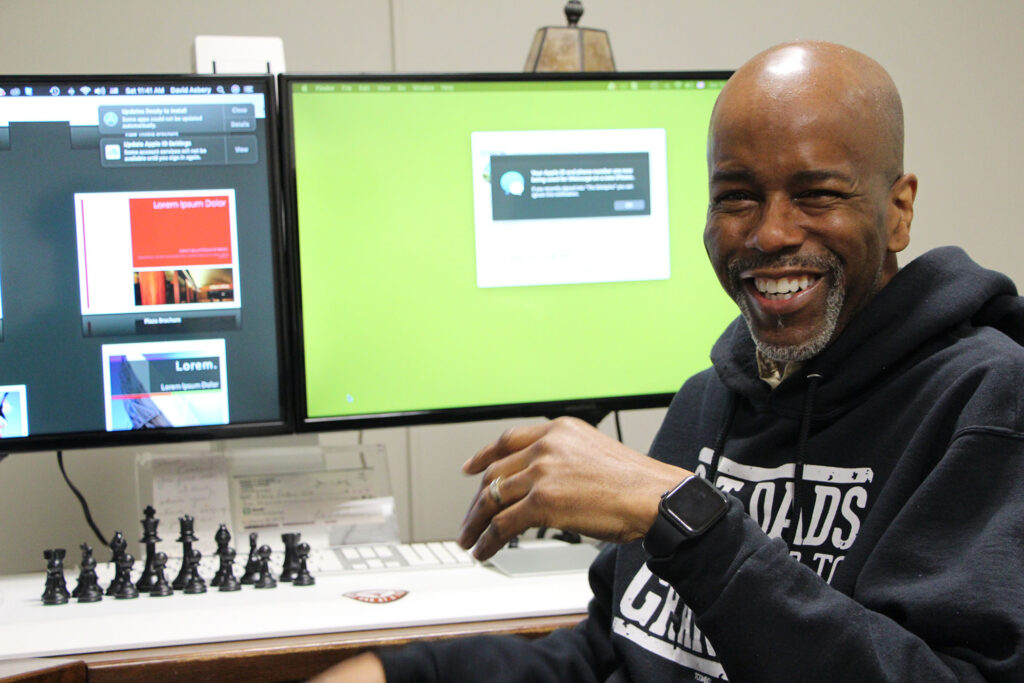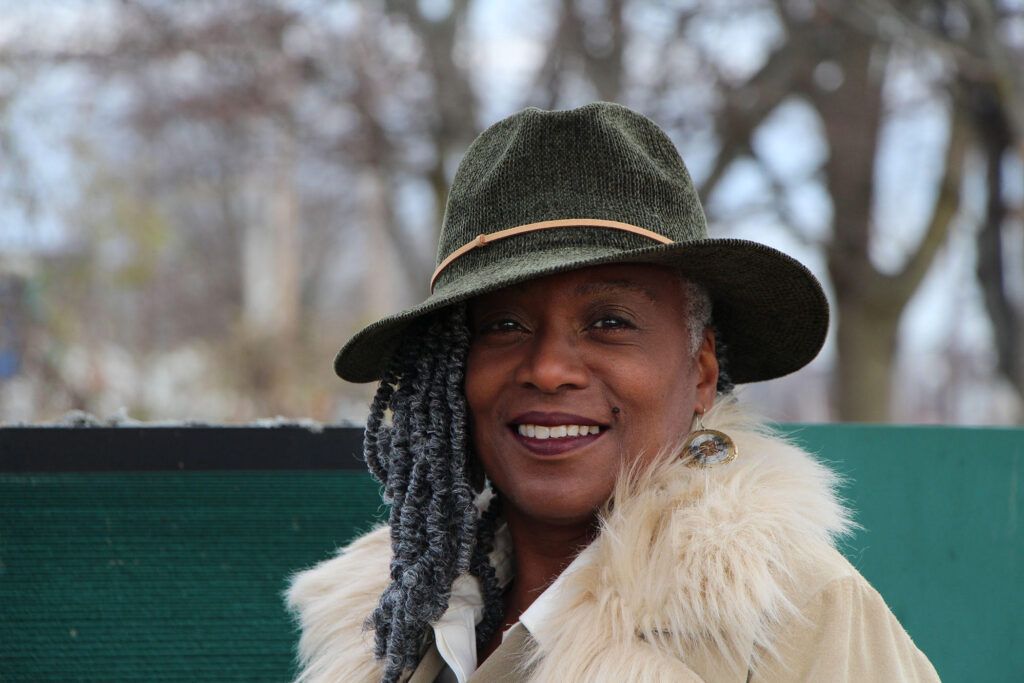- Suburban America is defined by practices of systematic oppression. Whether they are aware of the system, residents of Hamden, Connecticut, feel the effects every day, according to housing advocates.
- Although redlining — the denying creditworthy homebuyers a loan in a certain neighborhood — has been unlawful under federal law since 1968, biased lending policies still impact residential housing today.
- From the structure and location of predominantly Black or white residential areas, to accessibility and public transportation, zoning practices have perpetuated generational discrimination for lower income areas in Hamden.
Welcome to North and South Hamden
The town formed from the European settlement within New Haven Colony in May 1786. All the land was once home to Indigenous tribes, including the Quinnipiac. With the nickname “The Land of the Sleeping Giant” — as the home of a mountainous state park — Hamden is now Connecticut’s thirteenth-largest town with a small downtown section in the southern district and suburban in the north.
With distinct demographics and communities in North and South Hamden, there is a “lack of attainable, equitable and diverse housing specifically for residents with lower income.” Residents like Marissa Dionne Mead organize ways to become observant to discriminatory practices.
Marissa Dionne Mead, co-founder of Spring Forward, a local neighborhood group established to increase housing equity, said there is a void between the actions, words and intentions of her neighbors in the Spring Glen community, a relatively affluent section of town near schools and businesses around Whitney Avenue — the main commercial corridor that bisects Hamden.
“I think what led me to the conclusion that we needed this group was that last summer when George Floyd was murdered, I noticed hundreds of people interested in signs,” said Mead.
During last summer’s magnified awakening of police brutality amongst people of color, Mead observed a peak in interest among her Spring Glen neighbors, but their conflicting support of the movement and disapproval of multi-family housing development in the neighborhood encouraged Mead to act.
People were advocating and showing support with rallies in the streets, while also protesting a multi-family housing development in the neighborhood.
“So, to me that indicated there was a real disconnect in what people said their ideals were and what they were supporting and doing,” Mead said.
The Hamden community protested by kneeling for 8 minutes in recognition of police brutality victim George Floyd on July 25 at the Hamden Memorial Town Hall. However, she said this global awareness of racial injustice also unveiled discriminatory practices outside of the policing system where inequalities in education, housing, and employment can be identified.
“Making neighborhoods like Spring Glen more inclusive by increasing housing diversity in these neighborhoods and incentivizing home ownership,” Mead said. “I think it’s creating an affordable housing plan at the town level.”
Caysi Morgan, a Hamden resident, reflects on the privileges he experienced living in North Hamden.
“My family was the first Black family to move into [the neighborhood],” Morgan said. “And from a young age in my residential space I didn’t see people who looked like me or my family.”
His perspective of North and South Hamden originates from previously living on Treadwell, to now on Forrest Street where he saw “multifamily homes by the dozen.”
“South Hamden has more socioeconomic discrepancies,” Morgan noticed. “And there is a contrast and perspective between what you can do in life and what you want to.”
While driving north on Whitney Avenue, Morgan noticed the difference in landscape of residential and business areas.
“I feel like you will see more plazas that are lively, nothing old,” Morgan said. “Things look contemporary as opposed to south Hamden you’ll see more plazas missing store fronts.”
Morgan hopes for people to collectively embrace the differences between North and South Hamden, and not stigmatize them.

“It starts with the umbrella of social justice- equity, access, opportunity-” Morgan said. “There needs to be an equal amount invested in each of these communities, an equal amount of access.”
The community is long divided by its real estate. Hamden real estate agent Jameka Morrision-Jefferies said she has experienced discriminatory practices against her and clients.
“Instead of becoming a part of the problem, I became a part of the solution,” Morrision-Jefferies said.
Morrision-Jefferies’ passion to become a real estate agent resorted from her interest to help more people of color, and to impact the lack of generational wealth and ownership.
“That’s what led me to become a broker because I said I have to do this for my community,” Morrision-Jefferies said. “It’s still possible in these racial epithets.”
To “change the paradigm,” Morrision-Jefferies emphasized the importance of savings and good credit because people with money and privilege dominate competitors when buying.
“Education and I mean as early as grade school, we have to be taught how to be financially fiscal and responsible,” Morrision-Jefferies said.
From microaggressions at work, discrimination toward her and clients, and uncomfortable interactions, Morrision-Jefferies reflected on her experience; “What I do know is these things are still alive and well and I experience it in my profession all the time.” Morrision-Jefferies has sold a few properties to white clients in South Hamden — Treadwell Street being the furthest.
“Definitely in your South Hamden area they’re usually renters,” Morrision-Jefferies said. “They might consider going on Dormant Street. For the most part you very rarely see Caucasians buying in that area.”
Further dividing the neighborhood
Hamden’s residential zoning is coded R1-R5, which includes single-family homes and non-commercial civic institutions, like schools and religious institutions. These zones generally range from the lowest to highest residential density developments.
Spring Glen is predominantly white and single-family homes.
“The state’s exclusionary zoning laws are prevalent within this community,” Mead said.
David Asbery, a Hamden board of education member, identified a lack of “African American teachers in the school” and apparent inequalities students of color experiencing disproportionately higher suspension rates.

He lives in a residentially zoned community coded R1. Asbery acknowledged a difference in comfort as he drives along Dixwell Avenue, another commercial corridor that shortens the commute for the neighboring towns of Cheshire and New Haven.
“I would say you don’t see as many African Americans walking around or even driving around,” Asbery said. “The comfort level where I’m at is different. I have to think a little more about where I’m going, and how I’m going and what time I’m going. I don’t just go.”
As a Black man, Asbery said that discomfort comes from a busy shopping district and passing by police.
“I would say that the police have this place so locked down,” Asbery said. “That even the fact they might not be here in the numbers, individuals know if you’re gonna be up by that area most likely you’re going to get pulled over. You up by Cheshire, and you a black face and you ride through, it’s possible you might get stopped.”
Asbery tries to help other Black men confront this feeling with his organization, Fixing Fathers, Inc. It brings resources to fathers who want to be more involved in their children’s lives through books, videos, educational, and mentoring programs. It includes staying out of trouble with law enforcement, but also encourages community building.
To build awareness on explicit and implicit bias in housing — through actions that are intentionally or systematically discriminatory, like redlining — Mead and Danielle Chapman started Spring Forward to promote housing equity.
Spring Forward is an all-volunteer, bi-partisan and multigenerational neighborhood action group interested in expanding housing opportunities for all, Mead said.
Their work has unveiled complexities within the community’s zoning laws and has directed their attention to deconstructing potentially implicit bias of its developers and town planners.
“Shortly after we started the group, we figured out an additional layer in zoning (overlay), which restricts what can be built on the commercial corner on Whitney Ave,” said Mead.
According to the U.S. Census, Hamden is majority white; by about two-thirds, compared to 25% Black, 12% Latino and 5% Asian, which is demographically equivalent with the rest of Connecticut.
Mead has found that the overlay prevented small-scale building.
“What we’re trying to do is build an energy among our neighbors to go out and positively support good development in our community,” Mead said. “Positively support organizations that are working toward equity in housing and put pressure on our local legislator to change the zoning in Hamden to move it away from prioritizing single-family zoning.”
In a predominantly white state with underserved communities, inequalities in housing and systematic racism require resources and programs to assist people of color and non-whites achieve equity, according to President Biden’s executive order to achieve racial equity and support.
“People are still going to choose where they live, but the idea is people can choose where they live,” Mead said.
Hamden’s initiative for change
Since 1994, the Connecticut Fair Housing Center has provided investigative and legal services to residents who believe they have been the victims of housing discrimination and provide education and outreach on fair housing.
Fionnuala Darby Hudgen, its director of operations, had an initial vision to “save our public urban schools” and went to school for education and urban policy. However, after two years into her academic studies, she realized what was needed.
“You can’t actually fix schooling until you fix housing,” said Hudgen. Her career change from education to fair housing increased her motivation in achieving more equitable housing and education for residents.
“And as long as Connecticut is like a zip code destiny state meaning where you live determines where you go to school,” Hudgen said. “If we continue to have real systemic barriers in equitable housing for all people, but really people in the protected classes, specifically BIPOC folks, you won’t have equitable housing.”
Hudgen’s thesis emphasized her passion in zoning regulations. She coded them for “exclusionary measures” to determine if the town ordinance contained bias in its policies.
“Every policy should be centered around those who face discrimination,” Hudgen said.
To be proactive towards housing discrimination, Hudgen proposes to “ensure every single policy for housing is anti-racist.”
“I would say one of the ways you can change that is a stronger level of state enforcement of equitable housing [land using] policy,” Hudgen said. “A lot of things the state can do to mandate policies but, they don’t.”
Hudgen acknowledges it’s sometimes the people in charge of enforcing those policies that are the problem — whether they know it or not.
“Most land use officials are either elected or appointed positions,” said Hudgen. “And some of them may have a background in land use and housing work, but many don’t.”
In 2019, Hamden released a plan of conservation and development. The town planning and zoning commission; organized methods and proposed solutions to community issues. Town staff and consultants conducted community surveys and gathered perspective from residents.
“Guide the physical and economic development of Hamden. Promote the general welfare and prosperity of its people.” The 2019 plan of conservation and development in the town of Hamden
From the data gathered, the town identified that its residents embraced environmental consciousness, enhancing the character and quality of Hamden, and promoting mixed-use, pedestrian-friendly places where it is deemed appropriate.

Yvonne Jones, CEO of D.E.S.T.I.N.E.D. to Succeed, a Hamden-based youth empowerment organization, wanted to create more opportunities specifically for students in South Hamden.
“People say at-risk. I speak to the kids at-being promised,” Jones said. “Can you imagine being told you’re at-risk for the rest of their life.”
Founded in 2009, the group sought to “meet people where they are,” by creating multiple programs designed for individual student needs.
“There is a great need in South Hamden and unfortunately it hasn’t been addressed previously,” Jones said. “We get looked over so often.”
Jones feels “put into a box” as the town plans more affordable housing construction near her area, even though it’s “already saturated” with multifamily housing
“If I throw a stone 3 blocks over, I’m in the hood,” said Jones, who lives in an area of South Hamden zoned R-5.
She said she is encouraged by an apparent new direction the town is being taken. Jones anticipates “pivotal change” with Lauren Garrett as the new mayor. She wants more support from community members with funding and improved public transportation to help residents connect to organizations like hers.
“I would hope that there would be opportunities for nonprofits of color, all non-profits, but how many non-profits do you have minority owned [in Hamden]?” Jones said. “I need to make an impact on lives,” she said. “It’s not just my desire, it’s a need.”

